State symbols have been a mainstay of U.S. culture since the very beginning. Official symbols are used to represent the cultural heritage and natural history of each state in the most fun way possible.
Alaska is famous for its vastly open and beautiful spaces, an array of fun outdoor activities deriving from the incredibly unique and sought-after landscape, and deep-seated Native Alaskan Culture.
These have all played a part in the state adopting an abundance of symbols that are indicative of the state’s historical roots and geological history, as well as present-day achievements.
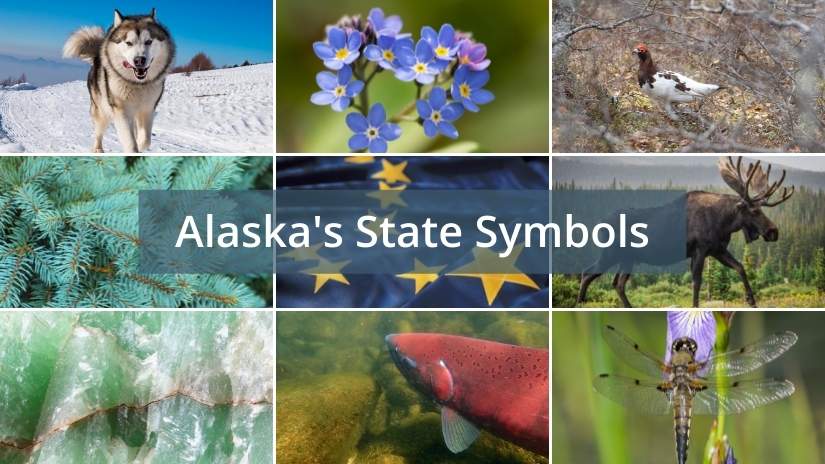
There are also recognizable icons and emblems for each Alaska, such as state seals and flags, nicknames and mottos, and much more which we have included in our Alaska state symbol list.
Now, let us take you on a journey through all 17 of Alaska’s historical and present-day successes and commodities that have shaped the state we know today!
State of Alaska Symbols List
There are lots of Alaska symbols that in turn create a whole host of interesting facts, both from the past and present.
We have shortlisted the top 6 most significant Alaska state symbols below and further down the page you will find a comprehensive table with each Alaska symbol and the date on which they were officially enacted.
You can sort the list by date in order to show the most recently enacted symbols or the oldest ones – it is a great resource.
Alaska State Animals
The Moose (Alces alces) officially became the state mammal of Alaska in 1998, they are also commonly referred to as Elk.
Moose are the largest members of the historical deer family, and the Alaskan moose is the largest of them all, weighing between approximately 1,000 and 1,600 pounds! Typically in the wild mooses will inhabit the forests of North America, Europe, and Russia.

The second animal to represent the state is the Bowhead whale, which is an Alaska marine mammal. This beautiful whale has been the state marine mammal for Alaska since 1983.
They were almost hunted to complete extinction, however, their numbers are fortunately making a slow and positive recovery after the protection by the International Whaling Commission intervened in 1937.
Alaska State Mineral
Gold was officially adopted as the Alaska state mineral in 1968 due to Alaska’s significant role in the famous “Golden Rush”, bringing thousands upon thousands of travelers to Alaska in the 1800s and early 1900s in search of gold and fortune.
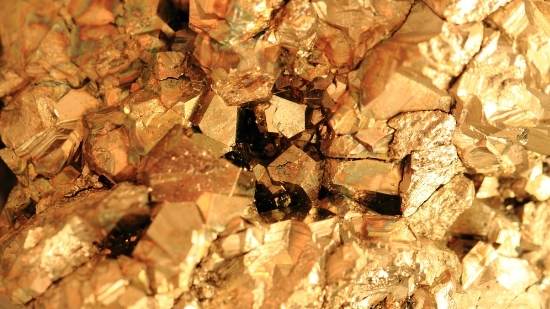
Alaska State Bird and Flower
The willow ptarmigan became the official state bird of Alaska in 1955.
In the wild, there are three different types of ptarmigan found across Alaska, the willow and the rock ptarmigan, which can also be seen residing in Scandinavia and Russia.

The incredibly unique and native alpine “forget-me-not” has been the state flower for Alaska since 1917.
These beautiful flowers belong to one of the true blue flower families, displaying truly mesmerizing coloration.
The forget-me-not flower (Myosotis alpestris) grows throughout the state of Alaska, typically in rocky mountainous places.
Alaska State Seal
The Alaska state seal was officially designed in 1910, which was before Alaska officially became a state and when it was still a U.S. territory.
Many things feature in Alaska’s state seal that have either historically or currently hold great significance within the state.
The rays above the mountains represent the iconic Northern Lights (aurora borealis), which can only be seen from one U.S. state – Alaska!

The smelter that appears on the seal symbolizes mining, which has played a significant role in the history of the state.
The train pays homage to Alaska’s rail transportation, and the ships represent marine transportation.
Alaska has an abundance of rich, green forests, which is why the trees appear on the seal.
Additionally, the farmer, horse, and three shocks of wheat paid respect to Alaskan agriculture over the years, benefiting the state’s economy tremendously.
Fish and Seals can be found on the blue outer circle, and they symbolize the natural wildlife and seafood importance within the great state.
Alaska State Insect
Four-spot skimmer dragonflies may be a tongue-twister, but they are a truly special insect, representing Alaska since 1995.
Their adoption as the official state insect was derived from Alaskan schoolchildren voting upon which out of the four chosen insects should be the one to symbolize the state.
The other contestants were the slender mosquito, the mourning cloak butterfly, and the bumblebee.
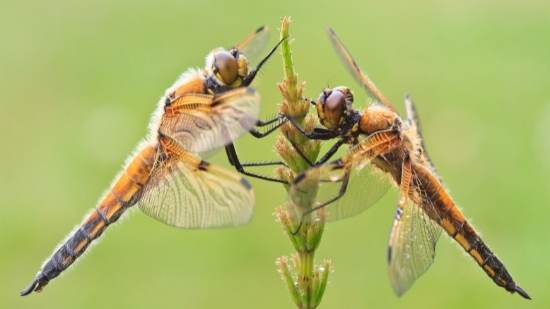
Alaska State Tree
The Sitka spruce (Picea sitchensis) became Alaska’s official state tree in 1962.
These trees are named after the Sitka sound in Alaska, and the spruce is the tallest conifer (a group of trees and shrubs that grow in cold climates) in the world!
Their large growth rate is down to the moist ocean air and summer fog that often resides in Alaska’s cold terrain.
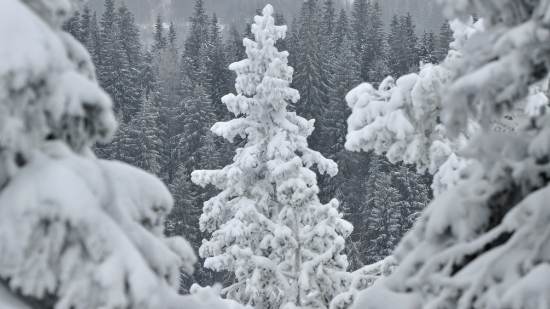
Alaska State Dog
It shouldn’t come as much of a surprise to see the Alaska state dog as the Alaskan Malamute, not only because of the name but because of the type of dog.
Malamutes are known for their impressive strength and endurance, which is required when they carry heavy loads and people on sleds. Their thick, beautiful coat and friendly faces are incredibly adorable.
The Alaska state dog symbol was adopted in 2010, making it one of the newest state symbols to represent the state.
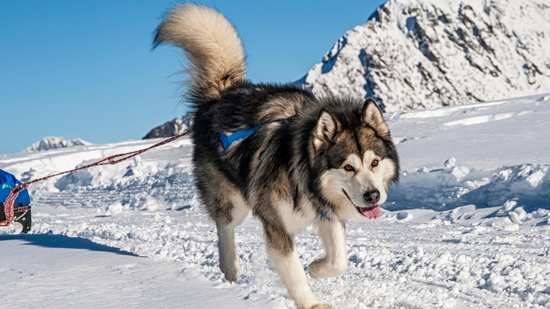
Alaska State Flag
United States territories did not usually have their own unique flags prior to statehood.
However, Alaska did, which probably has something to do with it being the second to last state to join the union in 1959.
In 1926, the former territory of Alaska held a competition that was sponsored by the American Legion, seeking a territorial flag to represent the snowy region.
A year down the line after the Alaskan legislature approved the winning design, Alaska had its own unique flag.
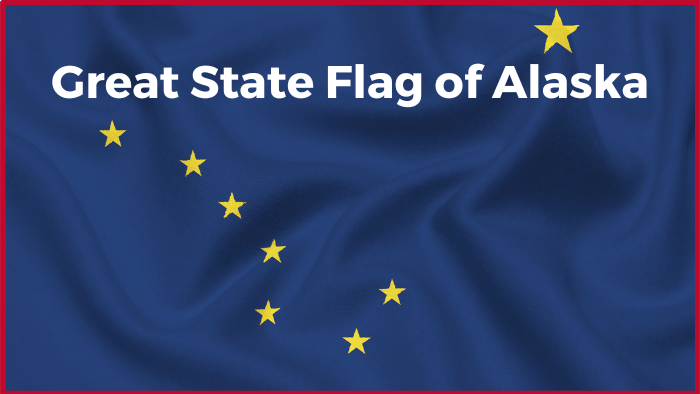
Instead of changing it after being admitted as the 49th state in the union, Alaska kept hold of it, and the design remains unchanged to this day.
The man responsible for the iconic design was Benny Benson, a 13-year-old boy hailing from an orphanage in Alaska. His simplistic design resonated with many Alaskans of different ages and backgrounds.
The flag itself displays a deep, dark blue color, which symbolizes the Alaskan sky, and also the forget-me-not flowers that symbolize the beginning of the spring months.
There are stars that feature in the background – showcasing the North Star that represents Alaska being the northernmost part of the United States.
Alaska State Fossil
In 1986, Alaska adopted the Woolly Mammoth (Mammuthus primigenius) as the official state fossil.
This adoption was rather suitable when you consider the vast icy and snowy terrain that Alaska boasts, creating the perfect environment for the Woolly Mammoth.

Woolly Mammoths roamed Alaska’s land for many years some 10,000 years ago, before they reduced significantly in numbers, and subsequently became officially extinct.
Summers in Alaska provided them with large grassy plains, which gave them an almost unlimited supply of food and resources.
The last known areas for Woolly Mammoth populations were both Alaska and Siberia.
Alaska State Gem
Jade became the official state gem of Alaska back in 1968, these gemstones can be found all across the state due to Alaska being home to large deposits, including an entire mountain consisting of jades, on the Seward Peninsula.
Copper and jade were commonly traded by Eskimos back in the 1700s, prior to British exploration in Alaska. “Jade” is a term that refers to three minerals – jadeite, nephrite, and chloromenlanite.
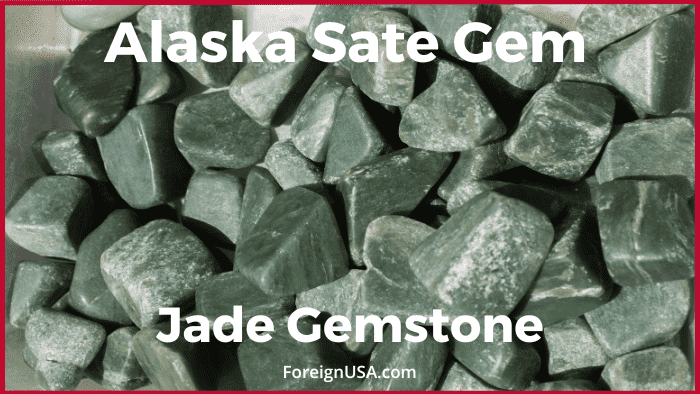
Alaskan nephrite varies massively in quality, typically, the best nephrite is smooth in texture.
They appear in the form of a boulder, and once these boulders have been uncovered, the beautiful smooth and green nephrite is revealed.
Alaska State Hostess
The official Alaska state hostess is “Miss Alaska”, which is the annual winner of a scholarship pageant that selects the representative for the state via the Miss America pageant.
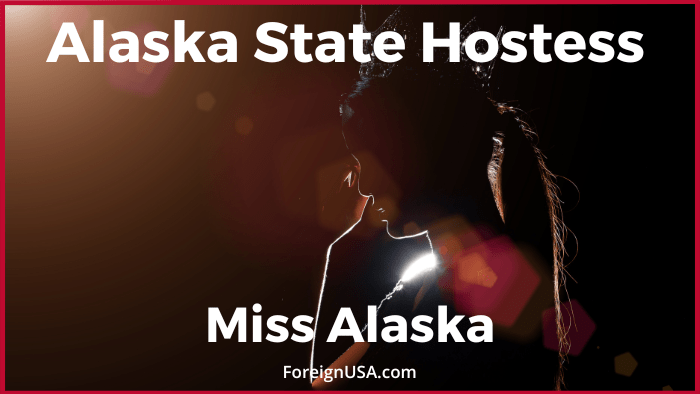
Miss Alaska Scholarship Foundation is a non-profit corporation that was established back in 1958 to provide contestants with the opportunity to improve and help achieve their professional and educational goals.
The scholarship program is a brilliant way of providing education and training for those who wish to achieve their goals in this field.
Alaska State Language
In 1998, Alaska passed a bill assigning English as the official state language. However, shortly after, in 2014, the Official Language Act was amended, which added 20 native Alaskan languages as co-official state languages, in addition to English.
These additional languages were spoken throughout Alaska, mainly by the natives of the state, way before it was admitted to the union.

Approximately 16.2% of the current Alaska population over the age of 5 years old speak a language other than English, and around 2.4% are “linguistically isolated”, which means that they speak another language at home, and or speak limited English or not at all.
Here are the languages other than English that are native to Alaska: Inupiaq, Siberian Yupik, Central Alaskan Yup’ik, Alutiiq, Unangax, Dena’ina, Deg Xinag, Holikachuk, Koyukon, Upper Kuskokwim, Gwich’in, Tanana, Upper Tanana, Tanacross, Hän, Ahtna, Eyak, Tlingit, Haida, and Tsimshian.
Alaska State Sport
The Alaska state sport is “dog mushing”, which sounds pretty bizarre but is actually a pretty well-known sport and certainly, one that is extremely popular in Alaska.
It also goes by the name “dog sledding”, and became the official sport of Alaska in 1972.
The premise of the sport is to use one or more dogs to pull a sled, typically by using a specialized dog sled on the snow or dry land, but usually snow.
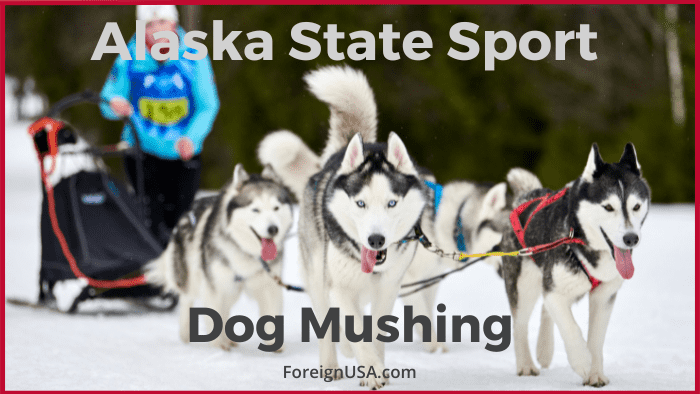
This sport relies on the power and athleticism of dogs, and the most common dogs used are Samoyed, Alaskan Malamute, Siberian Husky, and Chinooks. In Alaska, dog mushing is not just a sport, it is a cultural tradition.
People from the Northern Hemisphere have used dogs to pull sleds for a number of centuries, with it being an efficient and effective way of transporting resources and people.
As you will already know, the Alaska state dog is the Alaskan malamute, which has been used for this exact purpose dating back many years.
Dog sled racing is well-known globally today, and has become a popular sport both for professional and recreational motivations. Alaska hosts an annual event called “The Last Great Race”, in which people from across the world come to witness the spectacle.
Alaska State Song
Alaska’s state song is actually tied in with the Alaska state flag, as it is called “Alaska’s Flag”. This symbol of Alaska was adopted in 1955 and was sung by Marie Drake, and the music was performed by Elinor Dusenbury.
The song itself is short but sweet, and they do not mention that the simplistic design was created by Benny Benson, the 13-year-old orphan, instead the lyrics focus more on Alaska as a whole, and how the flag perfectly represents the state and what it has to offer.
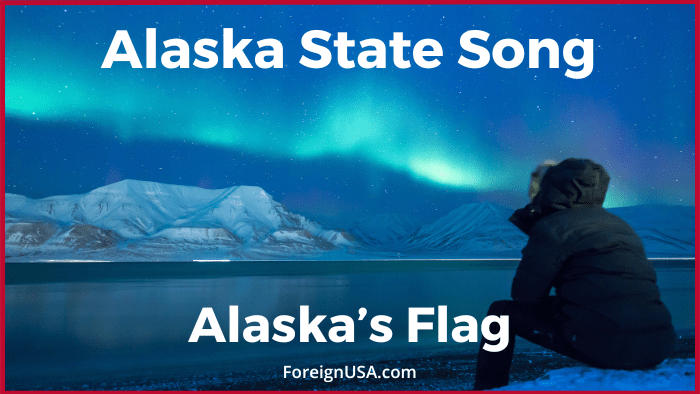
Here are the lyrics:
“Eight stars of gold on a field of blue,
Alaska’s flag, may it mean to you,
The blue of the sea, the evening sky,
The mountain lakes and the flowers nearby,
The gold of the early sourdough’s dreams,
The precious gold of the hills and streams,
The brilliant stars in the northern sky,
The “Bear,” the “Dipper,” and shining high,
The great North Star with its steady light,
O’er land and sea a beacon bright,
Alaska’s flag to Alaskans dear,
The simple flag of a last frontier.”
All Alaska State Symbols (Table)
Now that we have looked at Alaska’s state symbols in detailed text format, it makes sense to showcase all 17 of the Alaska state symbols that are best used to represent the state’s history and present achievements and moments, including the date of adoption.
Here is the complete list of symbols:
| Type Of Symbol | State Symbol | Year |
|---|---|---|
| Alaska State Bird | Willow Ptarmigan (Lagopus lagopus alascensis Swarth) | 1955 |
| Alaska State Bolt-Action Rifle | Pre-1964 Winchester Model 70 bolt-action rifle (multiple caliber) | 2014 |
| Alaska State Dog | Alaskan Malamute | 2010 |
| Alaska State Fish | King Salmon (Oncorhynchus tshawytscha) | 1962 |
| Alaska State Flag | State and Civil Flag | 1927 |
| Alaska State Flower | Wild native Forget-Me-Not (Myosotis alpestris) | 1917 |
| Alaska State Floral emblem | Wild native Forget-Me-Not (Myosotis alpestris) | 1917 |
| Alaska State Fossil | Woolly Mammoth (Mammuthus primigenius) | 1986 |
| Alaska State Gem | Jade | 1968 |
| Alaska State Great Seal | Alaska Great State Seal | 1912 |
| Alaska State Hostess | Miss Alaska | 1970 |
| Alaska State Insect | Four Spot Skimmer Dragonfly (Libellula quadrimaculata) [ More ] | 1995 |
| Alaska State Language | English | 1998 |
| Alaska State Land Mammal | Moose (Alces alces) | 1998 |
| Alaska State Marine Mammal | Bowhead Whaleadobe document (Balaena mysticetus) | 1983 |
| Alaska State Mineral | Gold | 1968 |
| Alaska State Sport | Dog mushing | 1972 |
| Alaska State Song | "Alaska's Flag," words by Marie Drake, music by Elinor Dusenbury | 1955 |
| Alaska State Tree | Sitka Spruce (Picea sitchensis) | 1962 |


